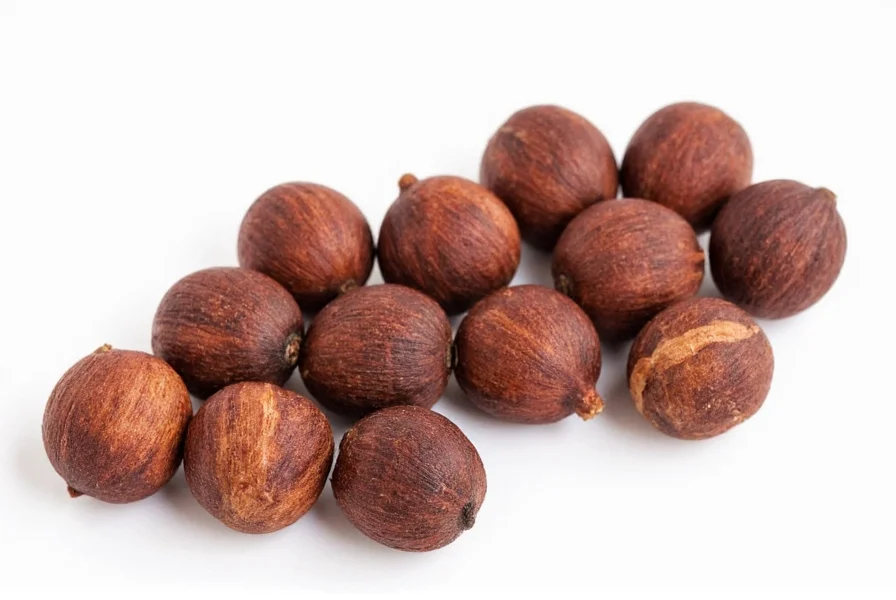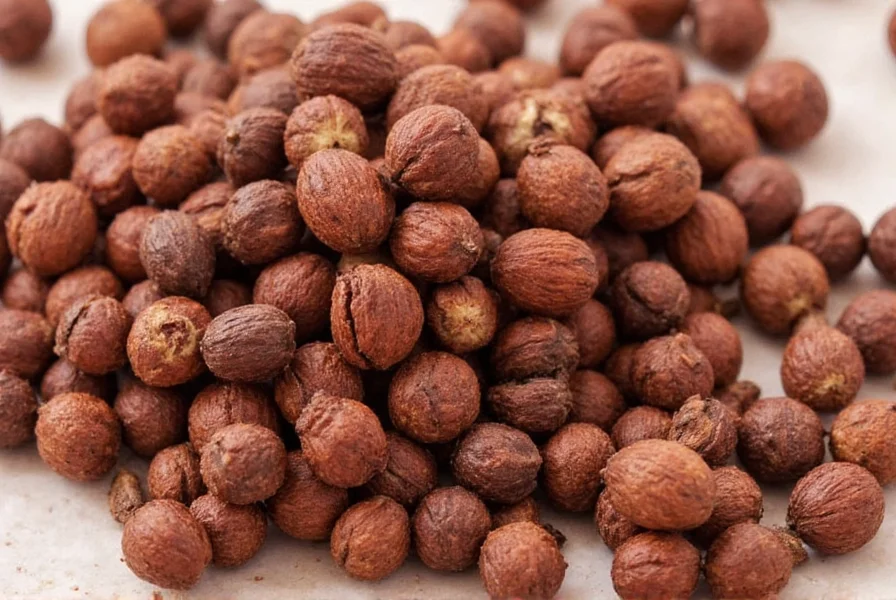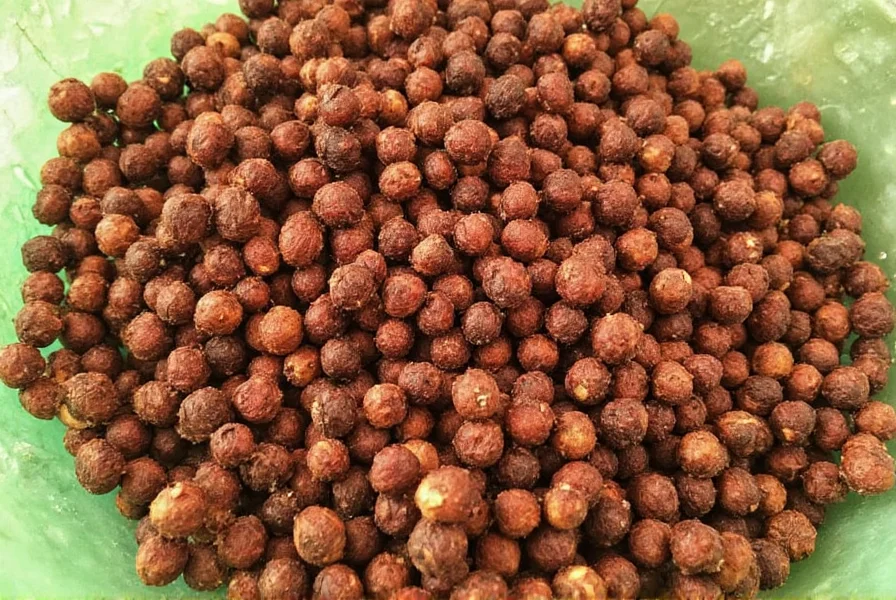Allspice remains one of the most misunderstood spices in the culinary world. Many home cooks mistakenly believe it's a pre-mixed combination of spices, but this couldn't be further from the truth. The allspice berry comes exclusively from the dried unripe berries of the Pimenta dioica tree, native to the Greater Antilles, southern Mexico, and Central America. When properly harvested and dried, these small berries develop their distinctive complex flavor profile that has made them indispensable in kitchens worldwide.
What Exactly Is Allspice?
The botanical name Pimenta dioica reveals its origins—"pimenta" comes from the Spanish word for pepper, reflecting early European confusion about this New World spice. Allspice berries measure approximately 5-7mm in diameter and turn from green to brown as they dry. The name "allspice" was coined by English traders in the 1600s who noted its flavor contained notes reminiscent of several spices.
Contrary to popular belief, allspice contains no actual blend of spices. Its complex flavor emerges naturally from the single berry. The primary chemical compounds responsible for its distinctive taste include eugenol (also found in cloves), caryophyllene (present in black pepper), and quercetin (common in onions and apples).
| Characteristic | Whole Allspice Berries | Ground Allspice |
|---|---|---|
| Shelf Life | 2-3 years | 6-12 months |
| Flavor Intensity | More complex, nuanced | Straightforward, immediate |
| Best Uses | Stews, pickling, infusions | Baking, rubs, quick dishes |
| Storage Tip | Airtight container, cool dark place | Refrigerate for extended freshness |
Global Culinary Applications
Allspice plays starring roles in numerous world cuisines. In Jamaica, it's essential for authentic jerk seasoning, where it combines with Scotch bonnet peppers and thyme. Middle Eastern cooks use it in baharat spice blends and meat dishes like kibbeh. Scandinavian bakers incorporate it into Scandinavian gingerbread and other holiday treats.
Professional chefs appreciate allspice berry substitute options when the real thing isn't available, though nothing perfectly replicates its complex profile. A combination of 1/2 teaspoon cinnamon, 1/4 teaspoon nutmeg, and 1/4 teaspoon cloves can work in a pinch for sweet dishes, but this blend lacks the peppery notes that make allspice unique in savory applications.

Maximizing Flavor in Your Cooking
Understanding how to use allspice in cooking separates amateur attempts from professional results. Whole berries release flavor slowly, making them ideal for long-cooking dishes like stews, soups, and pickling liquids. For best results, lightly crush berries before adding them to allow more surface area for flavor extraction.
Ground allspice works better in baked goods and quick-cooking dishes. Add it early in the cooking process for savory dishes to allow its flavors to meld, but incorporate it later in baking to preserve its volatile aromatic compounds. When following recipes calling for allspice berry measurements, remember that one whole berry equals approximately 1/8 teaspoon of ground spice.
Nutritional Profile and Potential Benefits
Allspice berry health benefits have been recognized in traditional medicine for centuries. Modern research suggests potential anti-inflammatory and antioxidant properties. A single teaspoon (2 grams) of ground allspice contains:
- 6 calories
- 1 gram dietary fiber
- 15% of daily manganese needs
- Small amounts of iron, calcium, and vitamin K
Studies indicate that eugenol, the primary compound in allspice, may help reduce inflammation and provide antimicrobial effects. However, research on allspice berry health benefits remains preliminary, and you should not consider it a treatment for medical conditions.
Storage and Quality Assessment
Proper allspice berry storage tips ensure maximum flavor retention. Store whole berries in an airtight container away from light and heat—they'll maintain peak quality for 2-3 years. Ground allspice loses potency more quickly; refrigeration extends its shelf life to 6-12 months.
To test freshness, crush a whole berry between your fingers. Fresh allspice should release a strong, complex aroma with notes of clove, cinnamon, and pepper. If the scent seems weak or one-dimensional, the spice has likely lost its potency. When purchasing, look for berries that are uniform in size and color with no signs of moisture or mold.

Debunking Common Misconceptions
The difference between allspice and mixed spice causes frequent confusion. Mixed spice (called pudding spice in some regions) is actually a British blend typically containing cinnamon, coriander, caraway, and nutmeg—not allspice. Chinese five-spice powder contains star anise, fennel seeds, cloves, Szechuan pepper, and cassia—again, no allspice.
Another persistent myth suggests allspice berries come from multiple trees. Botanical research confirms they originate solely from Pimenta dioica. The flavor complexity that led to its name comes from the berry's natural chemical composition, not from blending different spices.
Practical Kitchen Applications
Expand your culinary repertoire with these allspice applications beyond traditional uses. Add a single berry to tomato-based sauces for depth without heat. Include it in your next batch of apple pie for enhanced warmth. Try it in chocolate-based desserts where its peppery notes complement cocoa beautifully.
For meat dishes, allspice works particularly well with pork, lamb, and game meats. Create a simple rub with equal parts allspice, brown sugar, and salt for exceptional results. In beverages, add one berry to mulled wine or cider during the last 10 minutes of heating for subtle complexity.
Conclusion
Allspice berry deserves a permanent place in every well-stocked spice cabinet. Its unique flavor profile bridges sweet and savory applications while connecting diverse culinary traditions. By understanding what allspice really is and how to use it properly, home cooks can elevate their dishes with this versatile single-ingredient spice that tastes like a blend. Whether you're making Jamaican jerk chicken, Middle Eastern stews, or classic pumpkin pie, allspice adds that special something that transforms good cooking into memorable meals.
Frequently Asked Questions
Is allspice actually a blend of different spices?
No, allspice is not a blend. It comes from the dried unripe berries of the Pimenta dioica tree. The name “allspice” refers to its flavor profile that resembles a combination of cinnamon, cloves, and nutmeg, but it's a single spice derived from one plant source.
What's the best substitute for allspice if I don't have it?
For sweet dishes, combine 1/2 teaspoon cinnamon, 1/4 teaspoon nutmeg, and 1/4 teaspoon cloves. For savory applications, this blend won't fully replicate allspice's complexity. In a pinch, use equal parts cinnamon and cloves, but recognize that the distinctive peppery notes will be missing from your dish.
How should I store allspice to maintain freshness?
Store whole allspice berries in an airtight container away from light and heat—they'll stay fresh for 2-3 years. Ground allspice loses potency faster; keep it refrigerated in a sealed container for 6-12 months of optimal flavor. Test freshness by crushing a berry and checking for a strong, complex aroma with clove, cinnamon, and pepper notes.
Can I use allspice in both sweet and savory dishes?
Absolutely. Allspice works beautifully in both applications. In sweet dishes, it enhances pumpkin pie, gingerbread, and fruit compotes. For savory applications, it's essential in Jamaican jerk seasoning, Middle Eastern meat dishes, and tomato-based sauces. The key is using the right amount—typically 1/4 to 1/2 teaspoon per dish—as too much can overwhelm other flavors.











 浙公网安备
33010002000092号
浙公网安备
33010002000092号 浙B2-20120091-4
浙B2-20120091-4